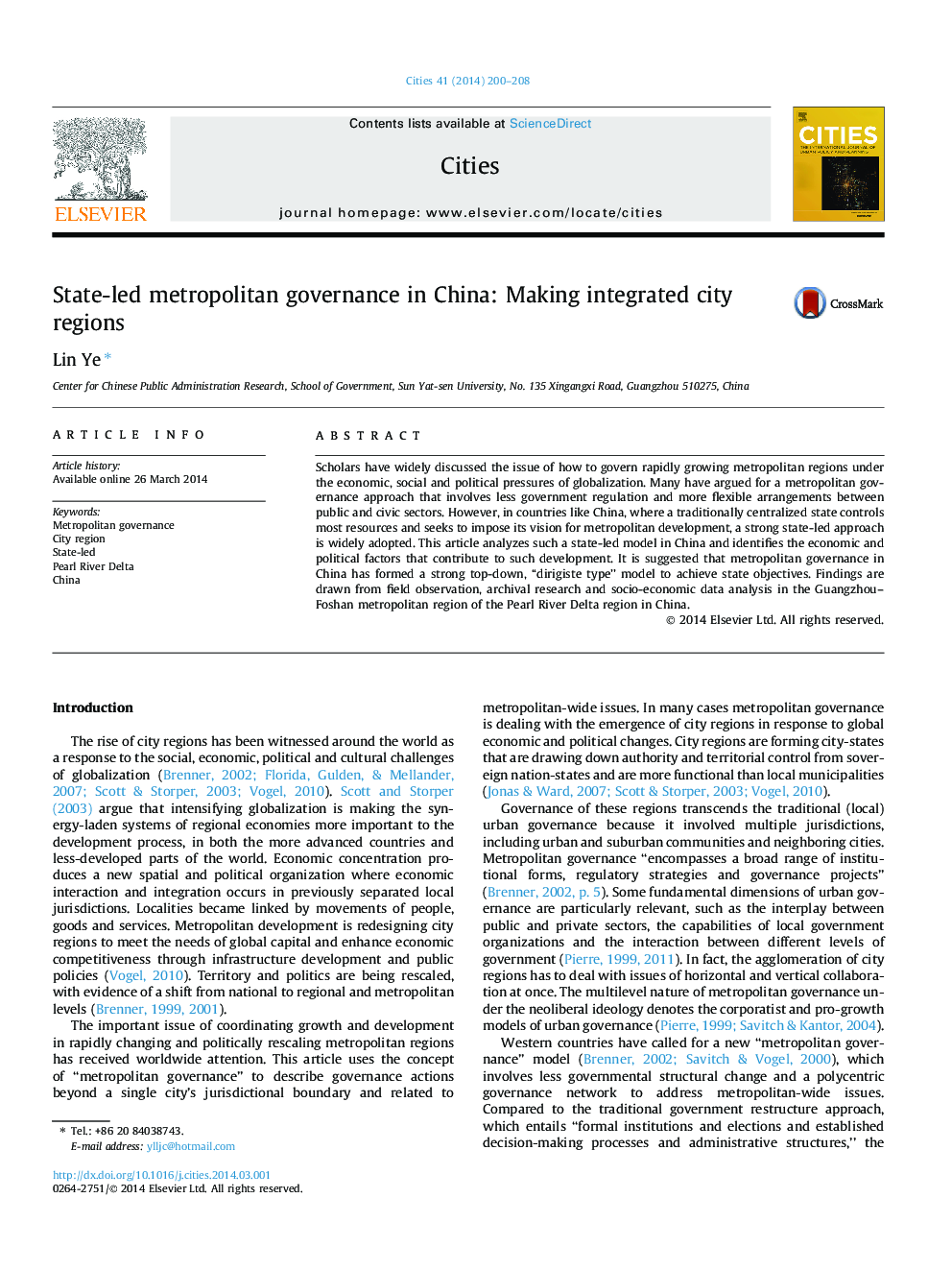| کد مقاله | کد نشریه | سال انتشار | مقاله انگلیسی | نسخه تمام متن |
|---|---|---|---|---|
| 1008281 | 938561 | 2014 | 9 صفحه PDF | دانلود رایگان |
• Chinese governments put strong institutional policies in place to direct city region development and governance.
• Metropolitan governance in China forms a state-led, dirigiste model to enforce state objectives.
• Political forces from vertical and horizontal dimensions contribute to the state-led governance.
• The non-state actor has limited impact on formulating inter-jurisdictional policies.
• It is important to see if this model portends a new model of metropolitan governance worldwide.
Scholars have widely discussed the issue of how to govern rapidly growing metropolitan regions under the economic, social and political pressures of globalization. Many have argued for a metropolitan governance approach that involves less government regulation and more flexible arrangements between public and civic sectors. However, in countries like China, where a traditionally centralized state controls most resources and seeks to impose its vision for metropolitan development, a strong state-led approach is widely adopted. This article analyzes such a state-led model in China and identifies the economic and political factors that contribute to such development. It is suggested that metropolitan governance in China has formed a strong top-down, “dirigiste type” model to achieve state objectives. Findings are drawn from field observation, archival research and socio-economic data analysis in the Guangzhou–Foshan metropolitan region of the Pearl River Delta region in China.
Journal: Cities - Volume 41, Part B, December 2014, Pages 200–208
